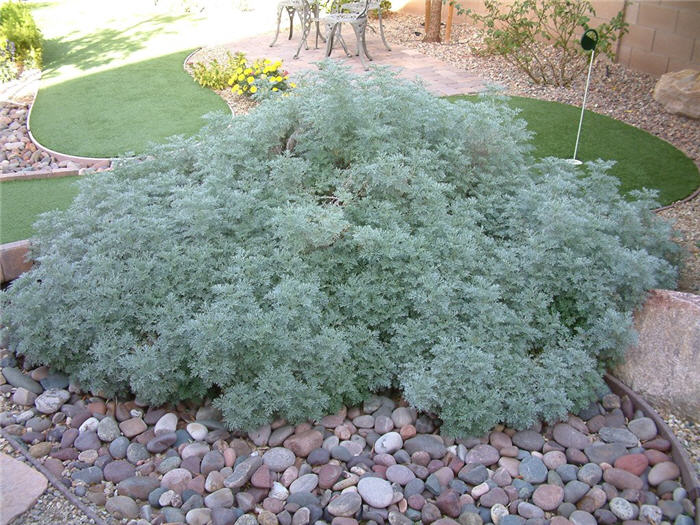| Botanical Name: Artemisia 'Powis Castle' | |
| Common Name: Powis Castle Artemisia |

-
Anatomy
-
Culture
-
Design
Plant Type
Perennial
Height Range
1-3'
Flower Color
n/a
Flower Season
n/a
Leaf Color
Grey Green, Silver
Bark Color
Grey
Fruit Color
n/a
Fruit Season
n/a
Sun
Full
Water
Low
Growth Rate
Fast, Moderate
Soil Type
Unparticular
Soil Condition
Average, Rich, Poor, Well-drained, Dry
Soil pH
Neutral
Adverse Factors
n/a
Design Styles
English Cottage, Mediterranean, Ranch, Seascape, Spanish, Native Garden
Accenting Features
Unusual Foliage
Seasonal Interest
Spring, Summer, Fall
Location Uses
Perennial Border, Shrub Border, Parking Strip, With Rocks
Special Uses
Container, Erosion Control, Mass Planting
Attracts Wildlife
n/a
Information by: Stephanie Duer
Photographer: Linda Engstrom
Photographer: Linda Engstrom
-
Description
-
Notes
With its finely dissected, silvery foliage, Powis Castle Artemisia is a wonderful foil for other plants with colored foliage or brightly colored flowers. Its silvery foliage is attractive over a long season, helping to bridge those gaps in the perennial border between lulls in flowering. Stems are useful in flower arrangements, and it is undisturbed by deer and rabbits. It may grow 2 to 3 feet tall and wide. I admit to liking this cultivar so much more than Silver Mound.
Best grown in poor to moderately fertile, dry to medium moisture, well-drained soils in full sun. Excellent soil drainage is essential for growing this plant and it does poorly in moist to wet soils as plants are susceptible to root rot. Plant stems tend to flop in the summer, if over-fertilized, over-watered, or receive too little sunlight. Prune plants in early spring to tidy, being careful to leave sufficient numbers of live buds on each stem to facilitate bushy growth. Never prune stems to the ground. Foliage may also be lightly sheared in summer to shape, but avoid pruning in fall.